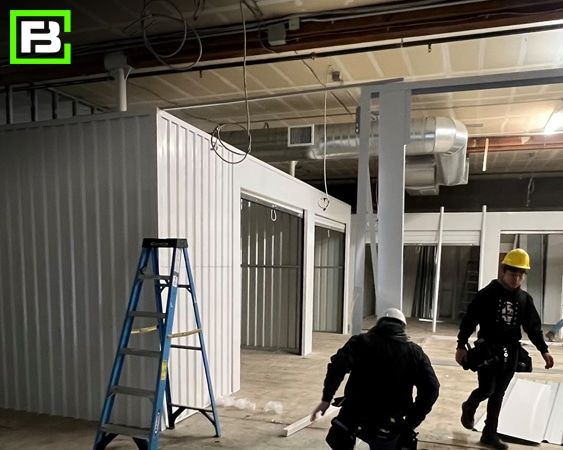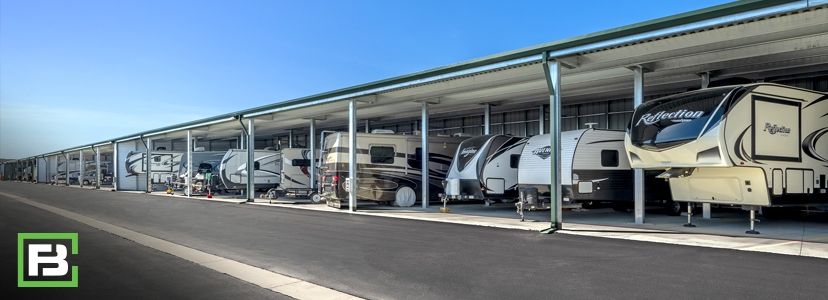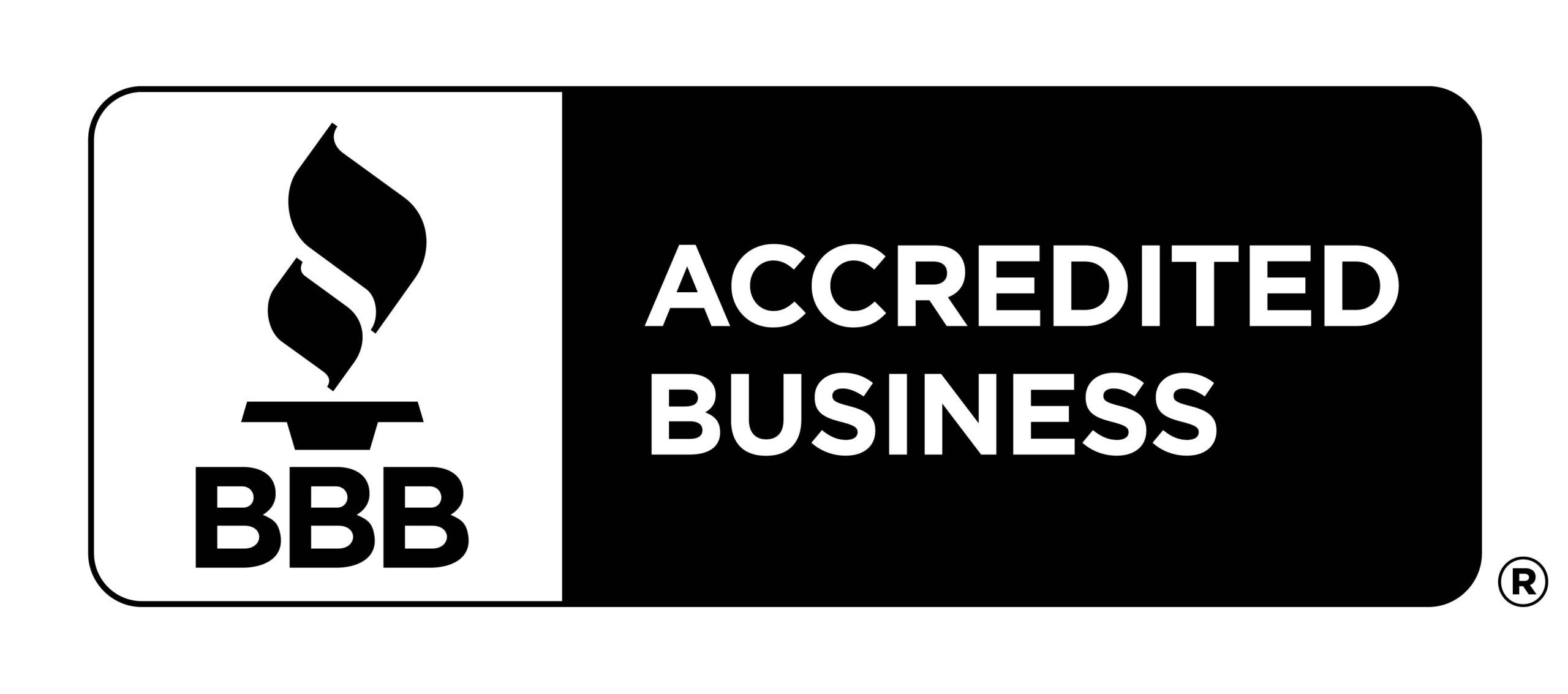Menu

Let’s face it, the self storage industry, which continues to see amazing growth, has come a long way. According to Mordor Intelligence Research, the valuation of the self storage market reached $87.65 billion USD in 2019. By 2025, that valuation is expected to grow to $115.62 billion. This puts the compound annual growth rate (CAGR) at 134.79% over the forecast period of 2020-2025.1
More and more, today’s different types of self-storage facilities are being built with an increasing emphasis on design and amenities, as well as security and convenience. Regardless of what you need to store, there is likely a spot that will provide the space you need with a few bells and whistles, too. As the industry has grown and continues to grow, so has the value associated with this type of investment.
And for the savvy investor, there are now more options than ever - from the traditional drive-up units to multi-story buildings to climate-controlled spaces to converting an office or big box store to building storage condos for boats and RVs. There are a wide variety of self storage options to choose from depending on your budget, location, and needs within the community in which you intend on building.
To see the types of projects Forge is involved with, see:
Let’s explore each option.
The traditional drive-up self storage facility typically offers outside drive-up storage. These warehouse type of units typically charge by the month and provide wide driveways for trucks to unload belongings into individual units. The interior spaces range in dimensions from 100 square feet up to hundreds of thousands of square feet.
This type of facility works well in communities where clients want to store and organize their belongings in a safe, clean place with easy access to their goods. These types of storage units provide the highest level of convenience and work best in a community where people want to load or unload their goods as quickly as possible. They are a great option where land is plentiful enough to create drive-up pathways.
These types of units typically do not offer climate-control options.
For an example of a traditional drive-up facility built by Forge Building Company, see Wise Space Storage | Boise, ID.
 Multi-Story
Multi-StoryMulti-story self-storage is great for when land space is limited. These are also ideal for the investor wanting to add climate-control options. Some may contain drive up options for the lower levels, then climate-control options for the upper levels.
Climate-controlled self storage is a great option in areas of the country that experience extreme heat or cold temperatures and/or that experience high humidity. These units are great for your clients storing furniture, antiques, artwork, and other items where the climate needs to be controlled to avoid moisture buildup and mold prevention.
For more information on whether or not climate-controlled self storage is worth the investment, see our blog titled, “Is Climate-Controlled Self Storage Worth the Investment?” and for an example of a Forge Building Company climate-controlled storage facility build, see: Kuna Caves Storage
 Conversions
ConversionsWith the recent pandemic and decline in big-box retail, there is now a significant inventory of vacant buildings out there for sale. With the current trend of office vacancy rates increasing, building owners are seeking creative ways to make that empty space generate profit again. As such, some are converting these structures into self storage facilities or selling them to others who wish to do so. These buildings can be converted into climate-controlled units or more traditional drive-up units depending upon the building, location, etc.
While this development path can be an efficient time and cost-saver, there are important considerations. These are addressed in our blog titled, “Converting Office and Big-Box Retail Buildings to Self Storage.”
Americans love to travel and have been purchasing RVs and boats for years. According to numbers shown from industry trade groups and places like Statistica 2, Camper FAQs 3, and Go Rving 4, growth in ownership and usage of RVs and boats is growing.
The RV industry alone has seen consistent growth every year since 2009, and with the popularity of van life coupled with the pandemic, there was a huge spike in Gen-Z and millennial RV owners that wanted to travel and have recreational experiences without crowds. Many also found that they could work from remote locations, which meant they could live in RVs and work, not just use them for travel. This helped the outdoor recreation industry to reach close to a trillion dollars.
There are many factors to indicate that the storage condo business is worth the investment, including local market conditions. Many areas of the country suffer from a lack of vehicle storage or places where boats and RVs can be stored securely. There are currently over 25,000,000 boat and RV owners with another 9,000,000 expected to join the market in the next 3 years. Economic and social trends indicate that this is likely to continue throughout 2023 and beyond. As the sales of RVs and boats increase, the demand to store these vehicles is also likely to grow. Traditional self storage facilities have limited space and amenities to store RVs and boats, which means that demand for RV/boat condos will likely grow as RV and boat sales rise.
Owners of other types of vehicles, such as collectible and antique cars, motorcycles, and commercial vehicles, may also be in the market for storage condos. Owners of all these vehicle types will not only want a unit for storage, but for maintenance and light repairs as well – a secure place where they can pursue their hobby.
For more information on where this segment of self storage is heading, see our blog titled, “Where is Boat and RV Storage Headed?” and for an example of a Forge Building Company Storage Condo development, see: Luxe Locker.

There are many perks that investors look forward to when owning a self storage facility.
Consistent Demand
From boat & RV condos to small units that accommodate a few moving boxes, there is generally a reliable level of demand for this type of commercial real estate. Finding and/or building the facility that is right for your budget and location is key.
What’s more, self storage businesses can usually weather the storm of an economic downturn or recession. When people are forced to downsize or move, self storage becomes a valuable option.
On the other hand, when the economy is strong, people are more likely to buy things or pursue home renovations that require temporary furniture storage.
Flexible Management Options
In comparison to other types of businesses, interaction with clients is usually minimal. Facility owners may choose to have a small team, but it’s not uncommon for a single person to run this type of business.
Aside from providing tours and signing contracts, it usually isn’t necessary to always have someone on the premises. Once a contract is signed, tenants have access to their unit and can make automatic payments each month. As an investor or facility owner, you can be as involved as you want to be.
Opportunities for Additional Revenue
The base rent for your storage units will be your main source of income, but many self storage locations offer a variety of other products and services to generate more revenue.
In addition to selling moving and storage supplies, such as boxes and packing materials, many storage businesses partner up with other companies to offer truck, trailer, and van rentals.
Low Maintenance Costs
Self storage is very low maintenance. Aside from proper lighting, security, and landscaping, there isn’t much to tend to. Common areas should be clean and well-maintained, but there’s no reason to invest in extensive decor.5
Choosing the right self storage investment option will depend on your location and its market, budget, and demand. The team at Forge Building Company is happy to help you through the entire process. Just give us a call.
Works Cited
1. Meyers, S. (2020, December 1). Forbes. Retrieved from Forbes.com: https://www.forbes.com/sites/forbesrealestatecouncil/2020/12/01/a-look-at-self-storage-growth-trends-now-and-post-pandemic/?sh=79758c022165
2. Statista. (2022, December 9). Retrieved from Statista.com: https://www.statista.com/statistics/1155988/us-recreational-boating-vessels/
3. Camper FAQs. (2023). Retrieved from Camperfaqs.com: https://camperfaqs.com/rv-statistics-trends-facts
4. Go Rving. (2022, June 16). Retrieved from gorving.com: https://www.gorving.com/newsroom/rv-industry-association-manufacturing-statistics
5. Mizes, B. (2023, January 5). CREXI. Retrieved from Commercial Real Estate Exchange, Inc.: https://www.crexi.com/insights/8-pros-and-cons-of-investing-in-self-storage?g_acctid=166-395-
